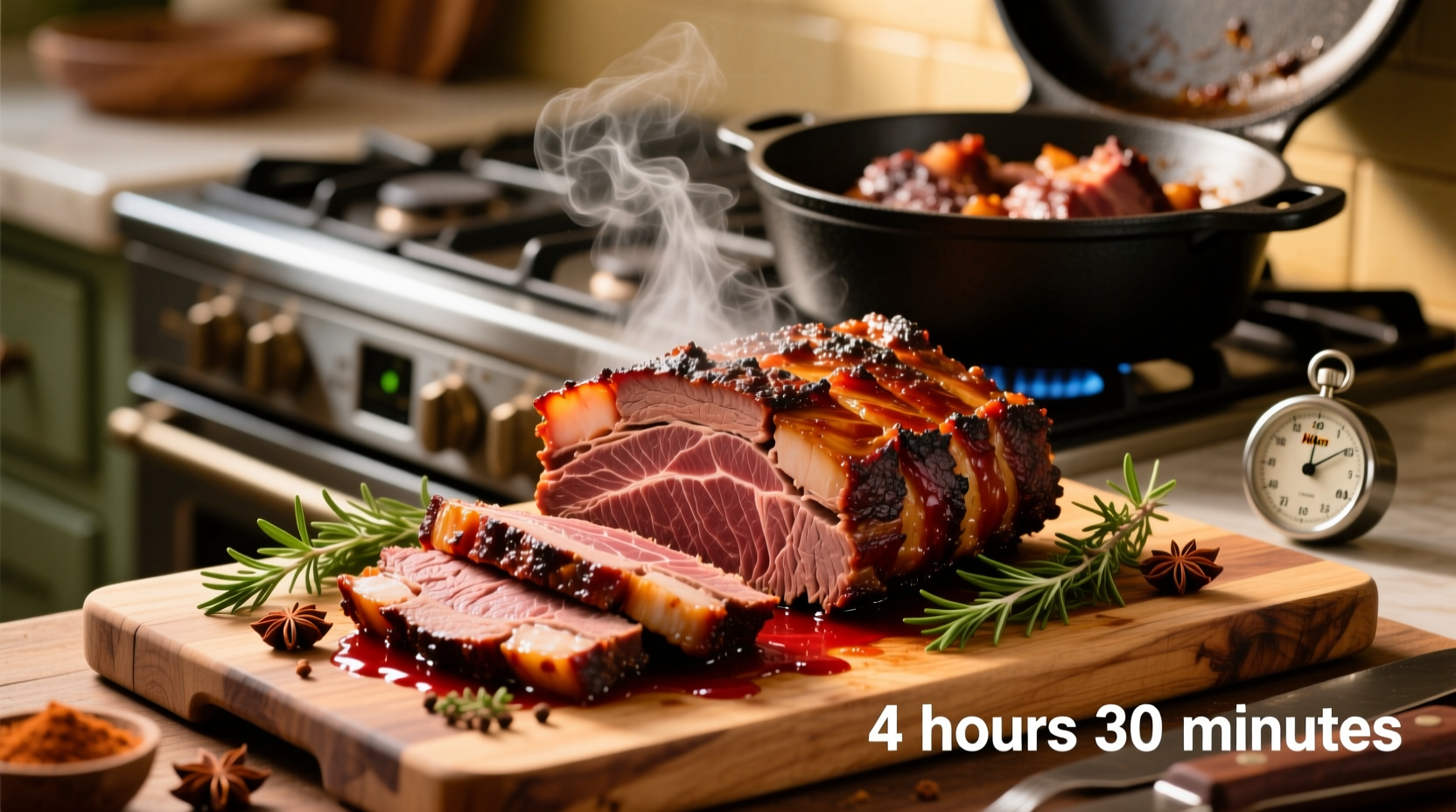Nothing compares to perfectly smoked brisket—tender, juicy, and packed with flavor. But getting that ideal texture requires understanding the precise relationship between time, temperature, and meat science. This guide delivers the exact cooking timeline you need, based on professional pitmaster techniques and meat science research.
The Science Behind Brisket Cooking Time
Brisket's cooking duration isn't arbitrary—it's determined by complex biological processes. This tough cut contains abundant collagen and connective tissue that must transform into gelatin through slow cooking. The collagen-to-gelatin conversion begins around 160°F and accelerates between 195-205°F, which is why temperature matters more than strict timing.
According to meat science research from Texas A&M University's Department of Animal Science, collagen breakdown requires both sufficient time and proper temperature exposure. Rushing the process results in tough, dry meat, while overcooking causes structural breakdown and moisture loss.
Your Step-by-Step Brisket Timeline
Follow this practical cooking journey based on real-world pitmaster experience and meat science principles:
Preparation Phase (1-2 Hours)
- Trimming: Remove excess fat to 1/4-inch thickness (20-30 minutes)
- Seasoning: Apply rub generously and allow 30-60 minutes for flavor penetration
- Equilibration: Bring meat to room temperature before smoking
Cooking Phase (The Critical Journey)
Understanding these stages prevents common mistakes:
| Cooking Stage | Temperature Range | Duration | Key Actions |
|---|---|---|---|
| Initial Smoking | 140°F-160°F | 3-5 hours | Build smoke flavor, no action needed |
| The Stall | 160°F-175°F | 2-6 hours | Consider wrapping in butcher paper |
| Final Push | 175°F-205°F | 3-5 hours | Monitor closely for tenderness |
The stall—when evaporation cools the meat—often causes panic among beginners. Research from the American Meat Science Association confirms this plateau is normal and shouldn't prompt temperature increases that risk drying out your brisket.
Resting Phase (Non-Negotiable)
Never skip resting! This crucial step allows juices to redistribute. Resting time depends on brisket size:
- Under 10 pounds: 1 hour minimum
- 10-14 pounds: 1.5 hours
- 14+ pounds: 2 hours
During resting, the internal temperature remains above 140°F—well within USDA safe food handling guidelines—while texture improves dramatically.

Weight-Based Cooking Time Estimates
Use this practical reference for planning your cook:
| Brisket Weight | Estimated Cooking Time | Total Timeline (Inc. Prep/Rest) | Temperature Target |
|---|---|---|---|
| 8-10 lbs | 8-12 hours | 10-14 hours | 195-203°F |
| 10-12 lbs | 10-15 hours | 12-17 hours | 195-203°F |
| 12-14 lbs | 12-18 hours | 14-20 hours | 195-205°F |
| 14-16 lbs | 14-21 hours | 16-23 hours | 195-205°F |
Key Variables That Affect Cooking Time
Your exact timing depends on several factors beyond weight:
- Smoker type: Offset smokers typically cook slower than electric models
- Ambient temperature: Cold weather extends cooking time by 15-25%
- Meat thickness: Point cuts cook faster than flat sections
- Wrapping technique: Butcher paper speeds cooking vs. foil vs. unwrapped
- Temperature consistency: Fluctuations of more than ±25°F significantly impact timing
Determining Perfect Doneness
Time estimates provide guidance, but these indicators confirm readiness:
- Internal temperature: 195-205°F in the thickest part
- Probe test: Meat thermometer slides in with almost no resistance
- Bend test: Lifting the brisket causes noticeable flexibility
- Texture: Should feel like softened butter when pressed
USDA guidelines confirm beef is safe at 145°F, but brisket requires higher temperatures for proper texture transformation. The USDA Food Safety and Inspection Service emphasizes that food safety and eating quality are different considerations for tough cuts like brisket.
Troubleshooting Common Timing Issues
Brisket cooking too slowly? Verify your smoker maintains consistent 225°F. Temperature fluctuations significantly extend cooking time. Consider wrapping at 165°F to power through the stall.
Cooking too fast? If your brisket reaches target temperature in less than 1 hour per pound, the smoker may be running too hot, risking dryness. Lower temperature and monitor tenderness rather than time.
Uneven cooking? Position the brisket with the point (thicker end) toward your heat source. Rotate periodically for even exposure.
Proven Techniques for Reliable Results
Implement these professional methods for consistent brisket success:
- The Texas Crutch: Wrap in butcher paper at 165°F to maintain moisture while speeding cooking
- Temperature monitoring: Use dual-probe thermometer tracking both smoker and meat
- Buffer zones: Plan for 20% longer than estimated time for unexpected stalls
- Resting environment: Keep in a cooler with towels for extended resting without cooling
Advanced Timing Considerations
For competition-level results, understand these nuanced factors:
- Fat content: Higher marbling extends cooking time slightly but improves final texture
- Grade differences: Prime briskets may take 10-15% longer than Choice due to additional fat
- Injection impact: Moisture-injected briskets cook faster but risk uneven texture
- Altitude adjustments: Above 3,000 feet, increase estimated time by 5-10%











 浙公网安备
33010002000092号
浙公网安备
33010002000092号 浙B2-20120091-4
浙B2-20120091-4